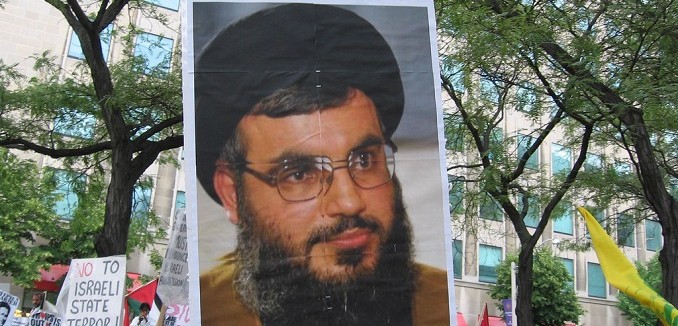Rarely does a day go by in Lebanon without funerals being held for Hezbollah fighters killed in Syria. For months the organization refused to explain how they died, instead settling for vague gestures toward “car accidents” and “mysterious deaths.”
Then a month ago, in a speech recorded before a crowd of his supporters, Nasrallah boasted that Hezbollah was involved in the fighting in Syria. The magnitude of the admission, from an organization that has long claimed it exists to protect Lebanon, can’t be denied. The motives behind the admission, in contrast, may be many.
It’s true that Hezbollah has a strategic interest in bolstering the Bashar al-Assad regime. Without Syria, Nasrallah’s supply routes from Iran to Lebanon would be disrupted. Still, these calculations don’t seem sufficient to account for the admission.
Instead, a combination of factors likely converged. Most simply, the pretense may have become untenable. But hundreds of Hezbollah members have disappeared from their homes. Some have come back in coffins, and others ended up in hospitals. An explanation was required. Moreover, Tehran may well have informed Hezbollah that even attempts to portray itself as “sitting on the fence” in the Syrian situation were no longer acceptable.
And so Nasrallah declared openly and explicitly that “Syria is the backbone of the resistance and the resistance cannot sit with its hands clasped when they wish to break the backbone. If Syria falls in the hands of the United States, Israel and its allies, the resistance will be lost and Israel will enter Lebanon and impose its conditions. If Syria falls in their hands, Palestine will be lost.”
Nearly a month has passed since the speech, and Lebanese Shiites have been left to face its effects. Suddenly the Hezbollah-dominated Bekaa Valley region – Baalabek, Hermel, Arsal – has turned into a war zone. Every few days missiles or mortar rounds fall on Shiite enclaves in Lebanon, from Dahiyya in southern Beirut to the Baalbek region in the northeast. The logistical spine of Hezbollah has turned into a target. Extremist Sunni figures are calling for Sunni youth to arm themselves and confront Hezbollah. The organization has become a target.
Back inside Syria, it is likely that Nasrallh lost roughly one tenth of the thousand fighters he committed to helping the regime regain control over the strategically important city of Qusayr. According to experts who closely follow the civil war in Syria, Hezbollah has deployed betewen 15 percent to 20 percent of its forces to Syria. If correct, the commitment would underscore the degree to which which Nasrallah has abandoned the “southern front” and engaged in strengthening the regime.
Nor is Hezbollah reducing its involvement. After the capture of Qusayr, the organization is sending fighters to Aleppo, Syria’s largest city, with the goal of capturing it from the rebels. This time Nasrallah is being slightly more cautious and is sending fewer fighters.
It appears that Hezbollah is seeking to support the Syrian army, together with other Shiite forces, in carving out a canton of “Allawi-stan.” This new territory’s final boundaries are still unclear. For the most part, the Syria forces and Hezbollah have abandoned Harran in the south and the desert in the east (Al Hasakah and Deir ez-Zur) and the Kurdish region in the northeast. It appears that Hezbollah seeks to control the area between Qusayr and Aleppo, and westward toward the Syrian port cities of Latakia, Jableh, and Tartus.
[Photo: humbleslave / Flickr]




